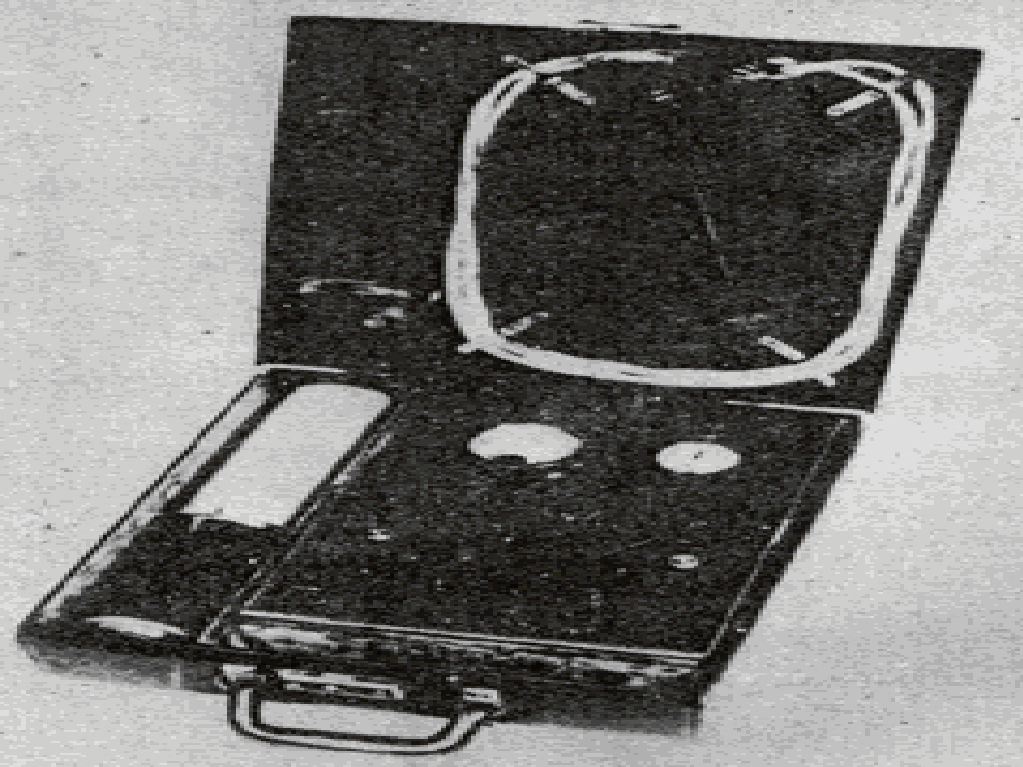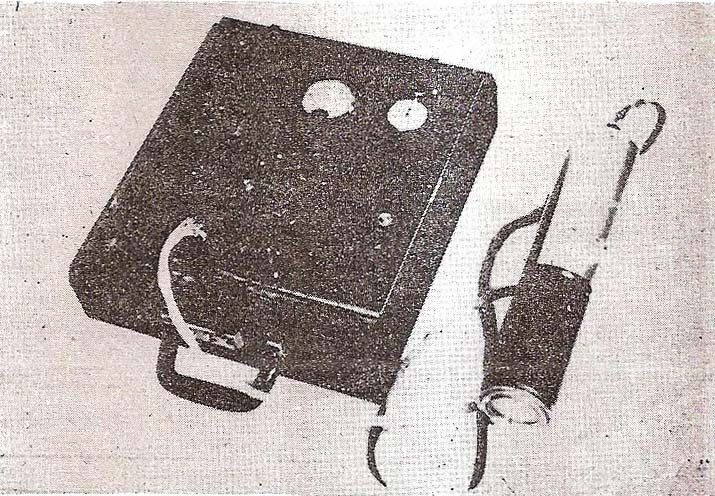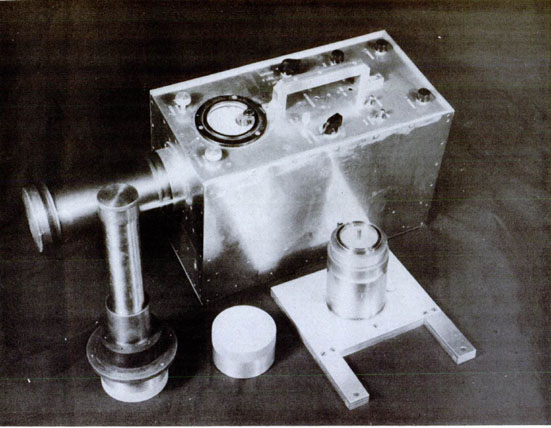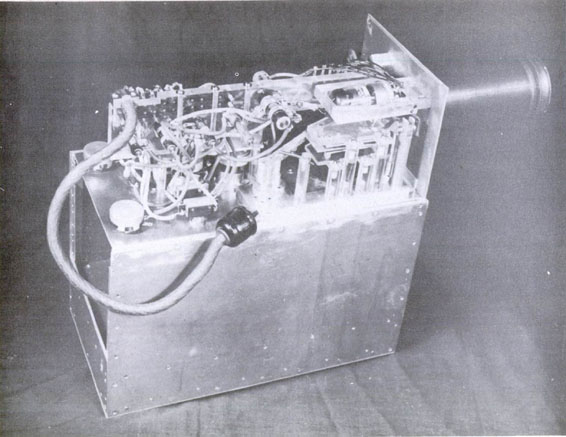

University of Rochester
The University of Rochester, Rochester, New York, was involved in radiation detector development as early as 1943. Dr. Stafford L. Warren, who was the Chief Medical Officer for the Manhattan District but was also the head of the Department of Radiology, met with Major General Leslie Groves about becoming a consultant to the Manhattan Project. Dr. Warren had been conducting research on radiation effects on the human body for many years as they were associated with the Department of Radiology and the University of Rochester medical school.
A portable micro-Roentgen meter was developed by G. Dessauer in 1944. It uses a conventional Victoreen R-meter chamber. The ionization chamber is 3” x 5” with a ¼” Lucite wall. The inside is coated with aquadag. It has a stop watch permanently mounted on the front panel.


Portable Micro-R Meter 1944
William Bale, Associate in Radiology, was assigned the task of devising instrumentation and counting techniques for radiation exposure in the plants involved in atomic bomb work. He developed the Rochester Ion Meter in 1945. He was head of the Division of Radioactivity and was assigned to the new Division of Special Problems. He was to work closely with Eastman Kodak Company and local businesses in Rochester. In June 1945, he developed a portable 40 lb. battery operated Geiger counter. It had interchangeable ionization chambers for beta/gamma, alpha and alpha/beta in precipitation tubes. The range was 0.3 R per 8 hrs to 2.5 R per 8 hrs (1 U-unit to 14 U-units) for beta radiation and 0.005 R per 8 hrs to 1.8 R per 8 hrs (0.03 U-units to 9 U-units) for gamma. Other chambers extended the range to 70 and 45 U-units.


Rochester Ion Meter by Bale 1945